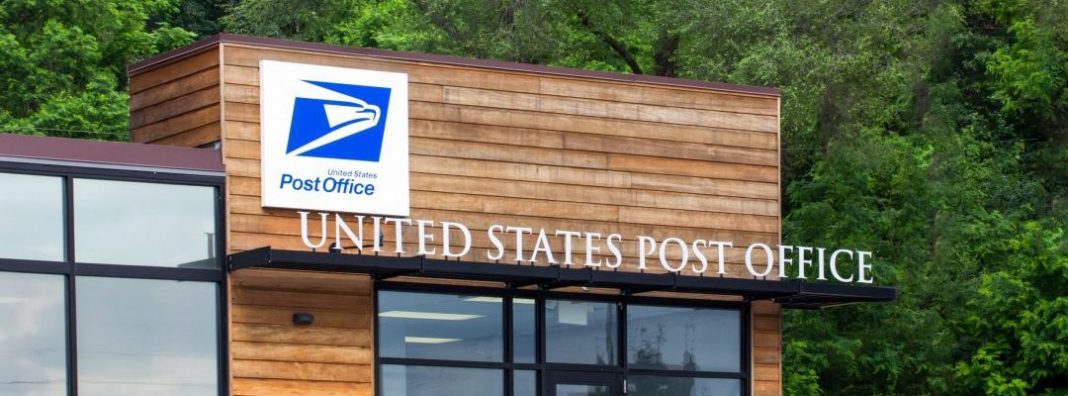
Now that Joe Biden is the presumptive Democratic presidential nominee, spectators are beginning to wonder what policies he will adopt as he attempts to appeal to the progressive wing of the party. From foreign policy to environmental protection and corruption, Biden will attempt to curry favor with skeptical left-wing voters by creating a unified platform.
Biden’s close ties with banking (he has been derisively called “The Senator from MBNA,” referring to his relationship with the former Delaware-based banking giant), will make a significant leftward pivot on banking policy a politically difficult one. He risks alienating long-time (and deep-pocketed) supporters, and there’s plenty of evidence that he’s an ideological moderate with regards to banking.
So how might Biden appeal to the left without angering his moderate supporters? One potential solution lies, in all places, at the post office. Senators Bernie Sanders (I-VT) and Elizabeth Warren (D-MA) have long advocated for the re-establishment of the Postal Savings System, which operated from 1911 to 1967 and allowed people to make deposits at local post offices. Its re-establishment has become a popular idea among many policy-makers on the left, and even made it into the 2016 Democratic Party platform.
There is certainly a need for banking options for low-income American households. The FDIC estimates that 8.4 million households have no checking or savings accounts. Many banks have eliminated free checking, or require minimum balances or direct deposits to avoid paying penalties. The result is a sad irony that all but the poorest receive federal subsidies (via deposit insurance) for their checking and savings accounts.
Despite its association with progressives, Postal Savings is not all that radical. A new system would offer some kind of banking (and maybe loans) to small-scale depositors, many of whom lack bank accounts or perhaps even access to a bank. Like the original system, it would probably only successfully pass through Congress with support (or at least no opposition) from banking associations. In other countries, like the Netherlands and Japan, the system has been privatized.
Though we have more than 50 years of history running a Postal Savings System, analysis on current plans is largely speculative. Supporters argue that the system will provide a haven for the unbanked or underbanked through one of the most popular federal institutions. Critics counter that the system will worsen the finances of a struggling government entity. While the historical record provides ammunition for both proponents (the system almost always turned a profit) and opponents (we had the system and chose to get rid of it) learning the lessons of history is never as easy as we want it to be. History may rhyme, but only in a Jabberwocky kind of way; making sense of it can be head-spinning.
For several years, my colleagues and I have been piecing together the history of the U.S. Postal Savings System, which operated nationwide. We found that the system initially seemed to serve exactly who it was designed for (small-scale, probably low-income households) but that changes to the larger financial markets changed the nature of the system (sometimes dramatically).
In the late 1920s, banking instability increased and interest rates decreased. Suddenly the humble Postal Savings system, which had the benefit of federal insurance (before the creation of the FDIC) and offered a relatively high 2% interest rate, became a popular destination for depositors. Billions of dollars flowed into the system during the Great Depression. When Postal Savings was initially designed, Congress had not anticipated that the system’s federal insurance would be so appealing, so this influx of money was certainly unintended.
This lesson led us to look specifically at Building & Loan Associations. B&Ls may have attracted many of the same, small-scale depositors as Postal Savings. Also, while most funds deposited into post offices were then re-deposited in nearby banks (a feature of the system that was included to broaden support for the initial legislation), B&Ls were not eligible for those re-deposits. B&Ls were also particularly hard hit by the Depression, as they experienced increases in mortgage defaults and decreases in share values. We wondered if some of this impact could be explained by Postal Savings.
Our findings suggest that lawmakers should be wary of any unintended consequences of postal banking. We found that increases in postal savings deposits were strong predictors for decreases in B&L shares. In fact, about 40% of the changes in B&L shares are predicted by prior changes in postal savings deposits. This suggests that households were either taking money out of B&Ls and putting it into the federally insured postal depositories, or avoiding B&Ls altogether.
During the 1930s, B&Ls desperately needed these funds, but instead were experiencing widespread losses. The share accumulation structure of the loans meant that as more borrowers defaulted on loans, the incentive for remaining borrowers to repay their loans decreased, which caused a crisis in B&Ls that eventually led to a complete restructuring of the entire industry. Given the magnitude of the effect of postal savings, it is likely that postal savings contributed to the struggles of Building & Loans during the Depression.
So what can these findings tell us about a potential for a successful reintroduction of Postal Savings? Naturally, the setting we studied looks little like the present day. But the 1930s looked dramatically different from 1911, when Postal Savings was started. The 2% interest rate that made Postal Savings so appealing in 1930 was specifically designed in 1911 to be so low as to not compete with private banks. But markets change. Postal Savings didn’t, and so the system designed for small-scale, relatively low-income depositors to draw money out from under their mattresses ended up taking much-needed funds out of the housing market at a period when they were desperately needed.
In designing a new system, two things should be kept in mind. The first is that postal services aren’t means-tested. Anyone can use services offered by the post office, no matter their income. If Postal Savings is to be designed for low-income depositors, its structure should disincentivize wealthier patrons. In 2018, Senator Kirsten Gillibrand (D-NY) proposed legislation that would have re-established postal savings and provided short term loans of $500; the interest rate for these loans would be pegged to the one-month Treasury yield. When the legislation was proposed, this equated to about a 1.6% interest rate. Today, it would be 0.08%. While such a loan structure would certainly help some low-income families, it would likely be heavily used by financially savvy, higher income people who come by for some free money when they buy their stamps.
The other lesson is that when the Post Office enters the banking market, it can create winners and losers. In the historical setting, Postal Savings likely drew money out of private banks, especially during periods of instability. While those deposits were re-deposited back into some banks, other banks (and non-bank financial institutions like B&Ls) lost out. Policymakers should be careful to avoid these same mistakes.


 The Fiscal Times
The Fiscal Times